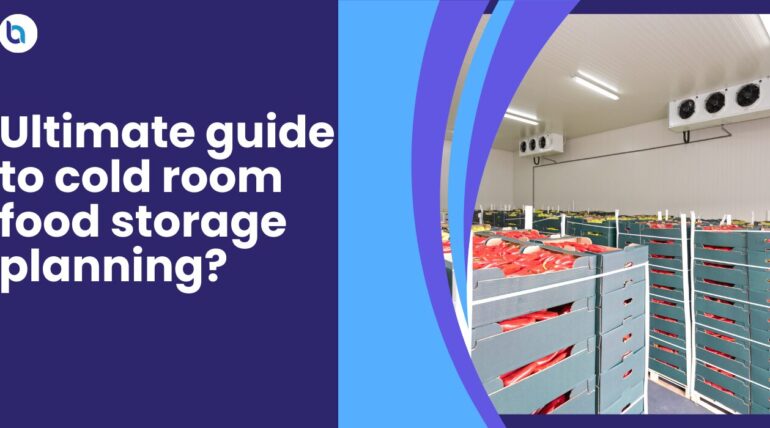
October 29, 2024
In the UAE, food storage in a cold room becomes critical in preventing foodborne illnesses and ensuring good quality since the temperature can rise to 104°F during summer months.
The Food Safety Authority emphasizes that improper storage conditions are responsible for the significant causes of food spoilage and contamination. Around 48 million people in the world succumb to foodborne illnesses each year due to improper food storage practices. Therefore, proper cold storage guidelines should be taken seriously.
Cold rooms are designated for maintaining foods at low temperatures, either for refrigeration purposes or freezing. Refrigeration in cold rooms ranges between 0°C and 4°C or 32°F and 39°F. In freezing, the needs are below -18°C or 0°F. The knowledge from the above on how to handle the rooms properly can save businesses against unnecessary costs attributed to waste and spoilages and, at the same time, remain in compliance with health regulations.
BestAirServices provides custom cold room solutions to each business in the UAE. It will ensure suitability and adequate performance and provide fitness for service to safety standards.
Understanding Cold Room Food Storage
Cold rooms are specific conditions that maintain particular temperature ranges, which will be necessary for storing certain food products. Chilled products should be stored between 0°C to 5°C (32°F to 41°F), and frozen foods should be stored at -18°C (0°F) or lower. The essential parts of efficient cold room planning are discussed as follows:
Control of Temperature
Control of temperature is a necessary aspect of the storage within the cold room:
Refrigerated Storage: Foods maintained at temperatures of more than 5°C degrade quickly because bacteria multiply quickly. Monitoring is done using calibrated thermometers.
Frozen Storage
Temperatures must be uniform at -18°C or lower. Otherwise, quality and nutrition may be lost.
Storage Space Layout
Cold room operations should have a proper and efficient flow and minimize the possibility of cross-contamination:
FIFO: This would ensure that the older stock gets exhausted before introducing newer stock to prevent waste.
Separation: Raw products should always be placed lower than cooked or ready-to-eat foods to avoid contamination.
Labeling: All items should always be labeled with dates of expiry and products kept for easy access and inventory control.
Design Considerations
Elements that will assist in designing a cold room include:
Size and Design: High rooms should reduce building costs while achieving effective temperature control.
Ventilation: The air flow in the cold room must ensure there are no hot spots and that temperatures in all areas are equal.
Insulation: Quality insulation material reduces energy loss and maintains internal temperatures constant.
Problems in Cold Room Storage
Temperature Fluctuations: Continuous, balanced checks are required to prevent spoilage. Alarms and automated facilities may help prevent temperature fluctuations.
Space Problem: This can be resolved with optimized design through offering better organizing and access capabilities.
Sanitation Support: It needs to be cleaned many times to avoid fungus and bacterial infestations.
Drainage Issues: Proper functioning in drainage keeps condensation out of the building. Blockages or bad drainage mean water pooling, which may result in slipperiness or structural damage
Door Seal Failure: Deteriorated or broken door seals let cold air out and warm air back inside. It does not only put additional pressure on the refrigeration equipment, hence making them work harder and always costing more in energy.
Economic Value
There is more to food waste than only economic losses. Together with revenue, all the resources utilized in production and transportation to arrive at the wasted food, including water and labor and energy, are lost.
Good-quality cold room solutions are well worth an investment as they are able to save costs in the future through the prevention of food wastage and, hence, also healthcare law compliance. With proper cold storage solutions, up to 30% losses due to spoilage can be accounted for. That is economically correct for any business investment.
Best Practices of Managing a Cold Room
Best practices will fully maximize the operations of cold rooms.
Sanitation Regular: This prevents bacterial growth by sanitizing the surfaces and equipment regularly.
Staff Awareness: The working staff should be empowered with handling skills and the culture of following the principles of cold storage.
Inventory Control: Inventory controls should be put in systems that weigh stock levels, date, and usage.
Health and Safety Standards
Every business that involves food storage must follow community health laws:
Temperature Records: Maintain temperature and cleaning scheduling records as part of compliance documentation.
Regular Examination: Cold rooms should be regularly examined to ensure high health standards.
Emergency Procedures: Implement power outage or equipment failure procedures that could utilize backup power or alternative storage.
IoT Monitoring System: IoT can revolutionize room temperature monitoring by providing instant alerts when temperatures shift.
Energy-Efficient Cooling Systems: It is investing in energy-efficient cooling systems, which saves on costs for operations, and that also impresses on the environment by implementing the green performance methodology.
Conclusion
A cold room food storage system enhances the company’s operations in the UAE. The food quality is healthy, improving food security. The strategy involves several critical elements, from accurate temperature controls to standardized storage solutions, careful design, strict adherence to industry cold room best solution, and material compliance with local laws and regulations. Indeed, these measures reduce waste and increase operational efficiency, contributing to better profitability.
Cold room management plays a very important role in protecting public health since the integrity of perishables is crucial to that. In a competitive market, as in the UAE, this support of strict food safety standards will ensure that businesses that concentrate on efficient cold storage solutions are not only protecting their products but also adding to their reputation in the market.
BestAirServices in UAE specializes in optimizing cold storage customs for your specific operational requirements. Our operation center of gravity defines the installation and maintenance of the cold room, ensuring your business is far above par in safety and efficiency.
Improve your cold room food storage planning through our team; ensure its smooth operation from your facility. Contact us today to learn more about how we can help you gain the best cold storage solutions for your business.


